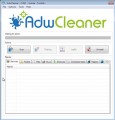The 1.0.0.1 is classified as potentially unwanted software. If this program asking “verification code” popping up on your screen then most probably that your machine is infected with adware (sometimes called ‘ad-supported’ software). It is a type of malicious software that designed to display a ton of annoying pop up ads. Unlike viruses, the ad-supported software will not delete or infect your files, but its actions will cause some problems with your browser. This is because, it will infect your computer, get full access to your browsers such as Chrome, Internet Explorer, Mozilla Firefox and Edge and be able to modify their settings. Of course, it did not ask you for permission and do it secretly as possible. Once your internet browser settings will be modified, you will be rerouted to intrusive ads, some of which can lead to malicious or misleading web pages. For this reason, we recommend that you start the clean up of your system as quickly as possible and thereby remove 1.0.0.1 unwanted software.
The adware is the part of the software that is used as an online promotional tool. It is created with the sole purpose to display dozens of ads, and thus to promote the goods and services in an open web-browser window. So, the 1.0.0.1 is just one of the many program of the so-called ‘ad-support’ type. It is designed to fill the browser’s constant stream of ads, or reroute the web-browser to not expected and intrusive advertising web sites. Moreover, the adware can substitute the legitimate advertisements on misleading or even banners that can offer to visit harmful web sites. The reason is simple, many advertisers agree on any ways to attract users to their web pages, so the creators of ad-supported software, often forcing users to click on an advertising link. For each click on a link, the authors of the ‘ad supported’ software receive income. It is the so-called ‘Pay-Per-Click’ method.
The 1.0.0.1 ‘ad supported’ software can change the settings of the Firefox, Chrome, IE and Edge, but often that a malicious software such as this can also infect all types of web browsers by changing their desktop shortcuts. Thus forcing the user each time start the internet browser to see annoying advertisements.
We suggest you to remove 1.0.0.1 “verification code” adware and clean your personal computer from unwanted pop-up ads as quickly as possible, until the presence of the ‘ad supported’ software has not led to even worse consequences. You need to follow the tutorial below that will allow you to completely remove the reroute to unwanted web-sites, using only the built-in Microsoft Windows features and a few of specialized free malware removal utilities.
How to remove 1.0.0.1 verification code
The adware is a form of malicious software that you might have difficulty in removing it from your machine. Happily, you have found the effective 1.0.0.1 adware virus removal guide in this blog post. Both the manual removal method and the automatic removal method will be provided below and you can just select the one that best for you. If you’ve any questions or need assist then type a comment below. Certain of the steps will require you to reboot your PC system or exit the web-page. So, read this guide carefully, then bookmark or print it for later reference.
Uninstall 1.0.0.1 verification code without any software
The tutorial will help you delete 1.0.0.1 unwanted software. These removal steps work for every version of Microsoft Windows operating system, as well as the Google Chrome, Mozilla Firefox, Internet Explorer and Microsoft Edge.
Removing the 1.0.0.1, check the list of installed programs first
Some of potentially unwanted applications, adware and browser hijackers can be removed using the Add/Remove programs tool that can be found in the Microsoft Windows Control Panel. So, if you are running any version of Microsoft Windows and you have noticed an unwanted program, then first try to delete it through Add/Remove programs.
Press Windows button ![]() , then click Search
, then click Search ![]() . Type “Control panel”and press Enter. If you using Windows XP or Windows 7, then click “Start” and select “Control Panel”. It will open the Windows Control Panel like below.
. Type “Control panel”and press Enter. If you using Windows XP or Windows 7, then click “Start” and select “Control Panel”. It will open the Windows Control Panel like below.
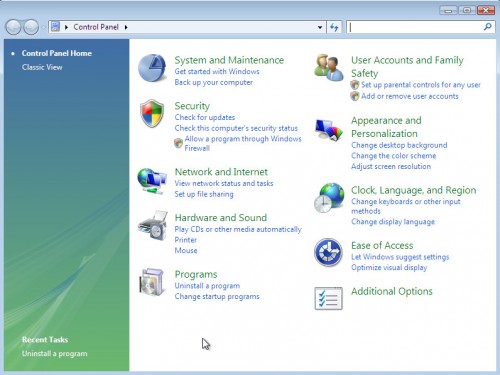
Further, press “Uninstall a program” ![]()
It will show a list of all applications installed on your PC. Scroll through the all list, and uninstall any suspicious and unknown programs.
Fix web-browser shortcuts, changed by ad-supported software
Unfortunately, the 1.0.0.1 adware virus can also hijack Windows shortcuts (mostly, your browsers shortcuts}), so that the ad web-page will be displayed when you open the Chrome, IE, Mozilla Firefox and Edge or another web browser.
Right click on the shortcut of infected web-browser as shown on the screen below.
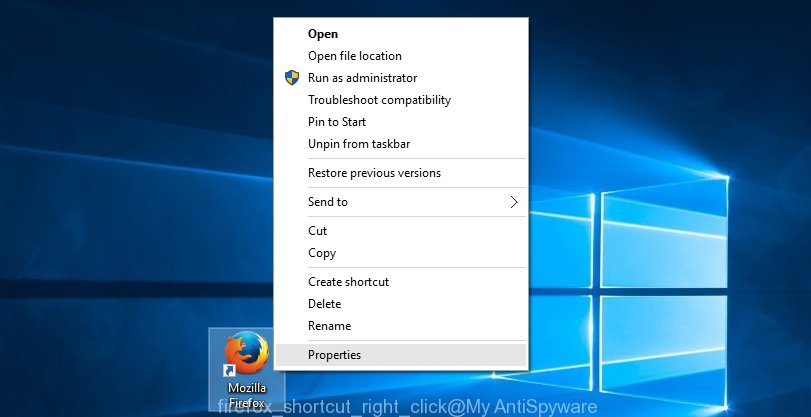
Select the “Properties” option and it’ll show a shortcut’s properties. Next, press the “Shortcut” tab and then delete the “http://site.address” string from Target field like below.
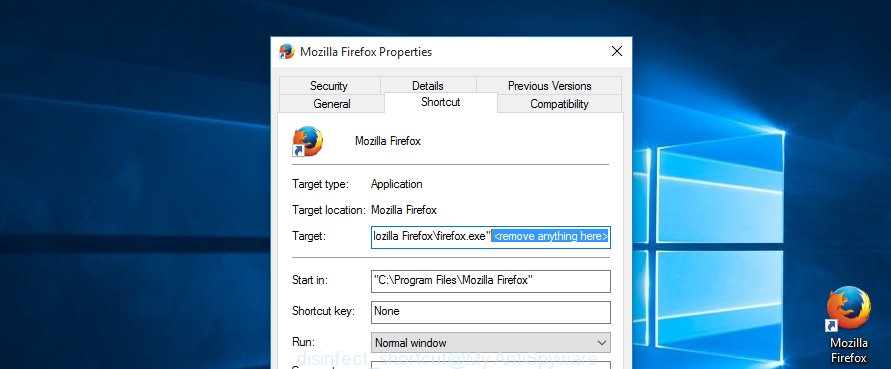
Then click OK to save changes. Repeat the step for all web browsers that are re-directed to an unwanted web site.
Remove unwanted ads from Google Chrome
If your Google Chrome web-browser is re-directed to unwanted web page, it may be necessary to completely reset your browser program to its default settings.
First run the Google Chrome. Next, click the button in the form of three horizontal stripes (![]() ). It will open the main menu. Further, click the option named “Settings”. Another way to show the Google Chrome’s settings – type chrome://settings in the browser adress bar and press Enter.
). It will open the main menu. Further, click the option named “Settings”. Another way to show the Google Chrome’s settings – type chrome://settings in the browser adress bar and press Enter.

The web browser will display the settings screen. Scroll down to the bottom of the page and click the “Show advanced settings” link. Now scroll down until the “Reset settings” section is visible, as on the image below and click the “Reset settings” button.
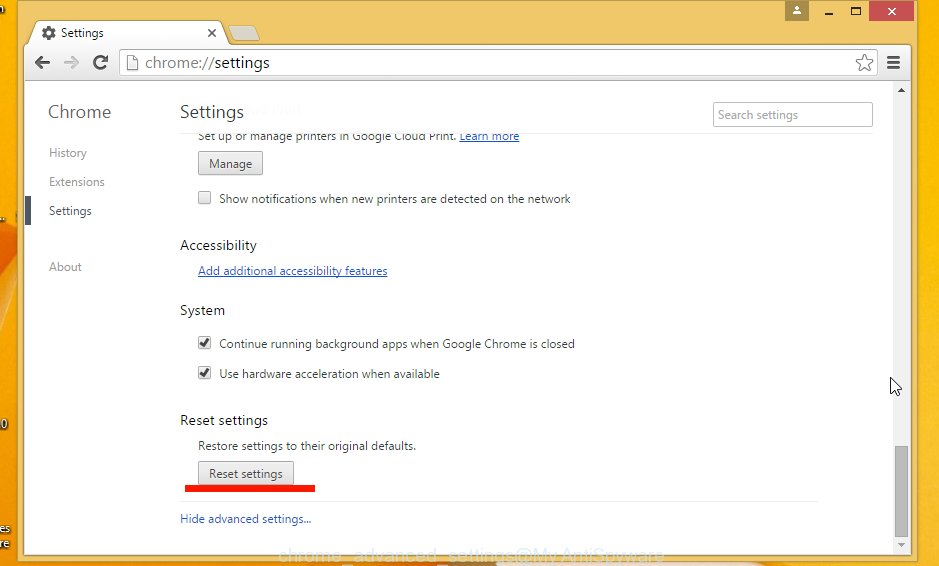
The Chrome will show the confirmation prompt. You need to confirm your action, press the “Reset” button. The browser will run the process of cleaning. When it is finished, the web-browser’s settings including newtab page, start page and search provider by default back to the values that have been when the Chrome was first installed on your computer.
Remove pop-up ads from Mozilla Firefox by resetting internet browser settings
If the Mozilla Firefox settings like homepage, newtab page and search provider by default have been modified by the ‘ad supported’ software, then resetting it to the default state can help.
First, start the FF and click ![]() button. It will display the drop-down menu on the right-part of the web-browser. Further, press the Help button (
button. It will display the drop-down menu on the right-part of the web-browser. Further, press the Help button (![]() ) as shown on the image below
) as shown on the image below
.

In the Help menu, select the “Troubleshooting Information” option. Another way to open the “Troubleshooting Information” screen – type “about:support” in the web-browser adress bar and press Enter. It will show the “Troubleshooting Information” page as shown on the image below. In the upper-right corner of this screen, press the “Refresh Firefox” button.

It will display the confirmation prompt. Further, press the “Refresh Firefox” button. The Firefox will begin a task to fix your problems that caused by 1.0.0.1 adware that reroutes your web browser to intrusive web-sites. Once, it is complete, press the “Finish” button.
Get rid of ads from Internet Explorer
The Internet Explorer reset is great if your web browser is hijacked or you have unwanted addo-ons or toolbars on your web-browser, which installed by an malicious software.
First, launch the Internet Explorer. Next, click the button in the form of gear (![]() ). It will open the Tools drop-down menu, click the “Internet Options” as shown in the figure below.
). It will open the Tools drop-down menu, click the “Internet Options” as shown in the figure below.

In the “Internet Options” window click on the Advanced tab, then click the Reset button. The Internet Explorer will open the “Reset Internet Explorer settings” window as shown below. Select the “Delete personal settings” check box, then click “Reset” button.

You will now need to reboot your computer for the changes to take effect.
How to automatically get rid of 1.0.0.1
Use malicious software removal tools to get rid of 1.0.0.1 verification code pop-ups automatically. The freeware utilities specially created for browser hijackers, adware and other potentially unwanted programs removal. These tools can remove most of adware from Google Chrome, Internet Explorer, Firefox and Edge. Moreover, it can remove all components of ad supported software from Windows registry and system drives.
Delete 1.0.0.1 with Zemana Anti-malware
We recommend you to use the Zemana Anti-malware that are completely clean your PC system of 1.0.0.1 “verification code” popups. Moreover, the tool will allow you to delete PUPs, malware, toolbars and browser hijacker infections that your computer can be infected too.
Download Zemana antimalware on your machine from the link below. Save it on your desktop.
165082 downloads
Author: Zemana Ltd
Category: Security tools
Update: July 16, 2019
Once the downloading process is complete, close all windows on your system. Further, launch the file named Zemana.AntiMalware.Setup. If the “User Account Control” dialog box pops up as shown in the figure below, click the “Yes” button.
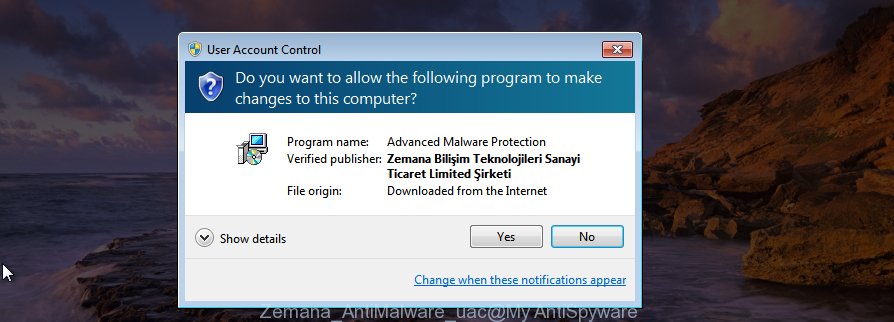
It will display the “Setup wizard” which will help you install Zemana antimalware on the personal computer. Follow the prompts and do not make any changes to default settings.
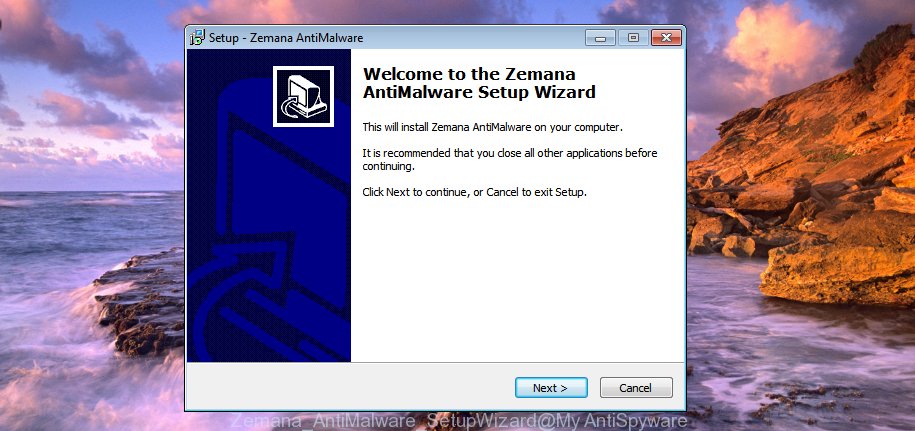
Once setup is finished successfully, Zemana anti malware will automatically launch and you can see its main window as shown on the screen below.
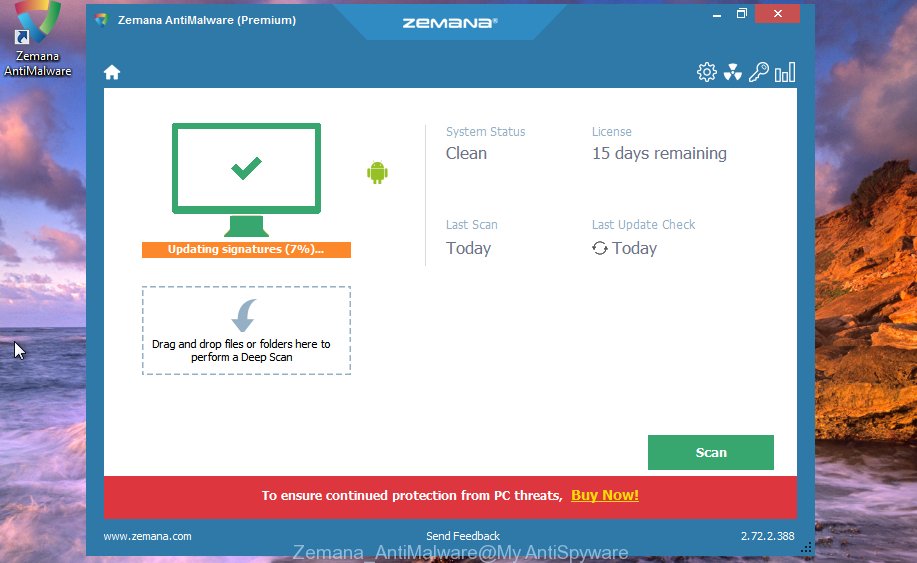
Next, click the “Scan” button to perform a system scan for the 1.0.0.1 adware virus which causes undesired “verification code” pop-ups. A scan may take anywhere from 10 to 30 minutes, depending on the count of files on your computer and the speed of your machine. While the application is scanning, you can see how many objects it has identified as threat.

When it completes the scan, the results are displayed in the scan report. Review the scan results and then press “Next” button.
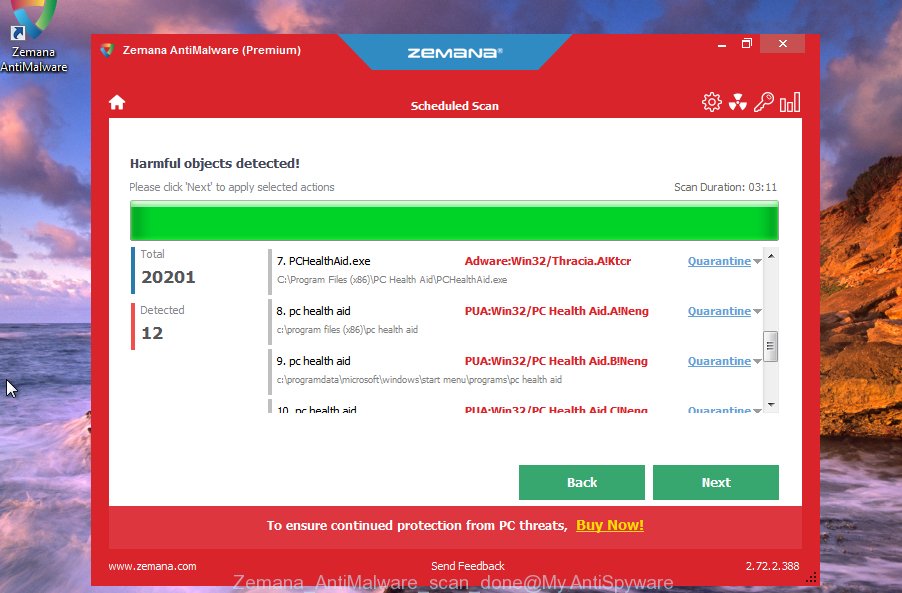
The Zemana antimalware will start removing adware and other security threats. Once disinfection is finished, you can be prompted to reboot your PC.
Scan and free your system of adware with Malwarebytes
We suggest using the Malwarebytes Free. You may download and install Malwarebytes to find adware and thereby remove 1.0.0.1 “verification code” popups from your web browsers. When installed and updated, the free malware remover will automatically scan and detect all threats exist on the system.

Download Malwarebytes Free by clicking on the link below.
327301 downloads
Author: Malwarebytes
Category: Security tools
Update: April 15, 2020
After downloading is complete, run it and follow the prompts. Once installed, the Malwarebytes will try to update itself and when this procedure is done, press the “Scan Now” button to begin checking your personal computer for the 1.0.0.1 adware virus that causes browsers to display intrusive pop up ads. Depending on your machine, the scan can take anywhere from a few minutes to close to an hour. While the utility is scanning, you can see count of objects and files has already scanned. Review the report and then click “Quarantine Selected” button.
The Malwarebytes is a free program that you can use to get rid of all detected folders, files, services, registry entries and so on. To learn more about this malware removal tool, we recommend you to read and follow the steps or the video guide below.
Use AdwCleaner to get rid of 1.0.0.1 unwanted software
AdwCleaner is a free removal tool that can be downloaded and use to remove adware that causes web-browsers to display intrusive 1.0.0.1 verification code pop-ups, browser hijackers, malware, PUPs, toolbars and other threats from your PC system. You can run this tool to detect threats even if you have an antivirus or any other security program.

- Download AdwCleaner by clicking on the link below.
AdwCleaner download
225644 downloads
Version: 8.4.1
Author: Xplode, MalwareBytes
Category: Security tools
Update: October 5, 2024
- When the download is complete, double click the AdwCleaner icon. Once this utility is started, click “Scan” button . This will begin scanning the whole computer to find out the 1.0.0.1 adware virus. A system scan may take anywhere from 5 to 30 minutes, depending on your personal computer. While the program is checking, you may see count of objects it has identified as threat.
- Once the scanning is done, it’ll show a list of all items found by this utility. Review the scan results and then click “Clean” button. It will display a prompt, click “OK”.
These few simple steps are shown in detail in the following video guide.
Run AdBlocker to stop unwanted ads and stay safe online
Use an adblocker tool like AdGuard will protect you from malicious ads and content. Moreover, you can find that the AdGuard have an option to protect your privacy and stop phishing and spam web pages. Additionally, ad-blocking applications will help you to avoid undesired pop-up ads and unverified links that also a good way to stay safe online.
Installing the AdGuard ad blocking program is simple. First you’ll need to download AdGuard by clicking on the following link.
26908 downloads
Version: 6.4
Author: © Adguard
Category: Security tools
Update: November 15, 2018
When downloading is done, double-click the downloaded file to launch it. The “Setup Wizard” window will show up on the computer screen like below.
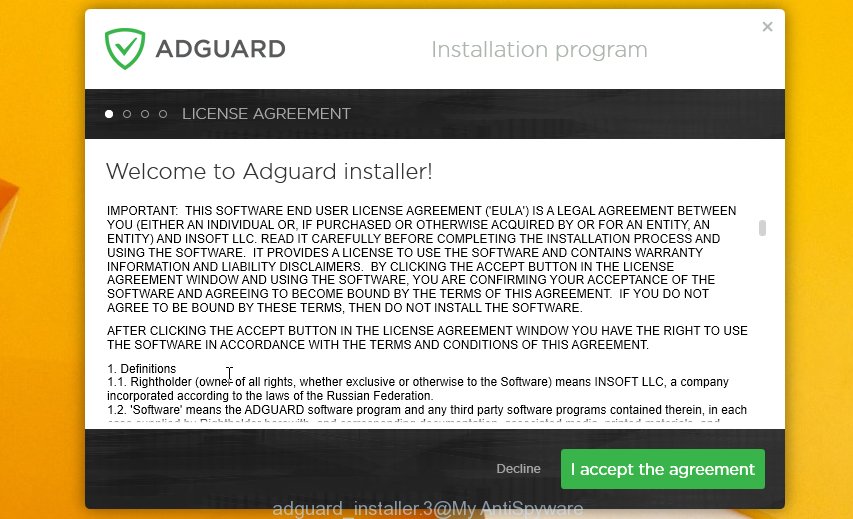
Follow the prompts. AdGuard will then be installed and an icon will be placed on your desktop. A window will show up asking you to confirm that you want to see a quick instructions as shown below.

Press “Skip” button to close the window and use the default settings, or click “Get Started” to see an quick tutorial which will allow you get to know AdGuard better.
Each time, when you run your computer, AdGuard will launch automatically and stop ads, unwanted popups, as well as other malicious or misleading pages. For an overview of all the features of the application, or to change its settings you can simply double-click on the AdGuard icon, that may be found on your desktop.
Where the 1.0.0.1 adware comes from
Probably adware get installed onto your machine when you’ve installed some free programs such as E-Mail checker, PDF creator, video codec, etc. Because, most often, the ad-supported software can be bundled within the installers from Softonic, Cnet, Soft32, Brothersoft or other similar web pages that hosts free software. So, you should start any files downloaded from the Web with great caution! Always carefully read the ‘User agreement’, ‘Software license’ and ‘Terms of use’. In the process of installing a new application, you need to select a ‘Manual’, ‘Advanced’ or ‘Custom’ installation mode to control what components and additional software to be installed. Nevertheless, even removing the program that contains ‘ad supported’ software, does not help you remove undesired 1.0.0.1 verification code popups from your computer. Therefore, you must follow the step-by-step guide above to remove adware and thereby get rid of all intrusive popups and redirects to unwanted web-sites.
To sum up
Now your computer should be free of the 1.0.0.1 adware virus that causes intrusive “verification code” pop-ups. Uninstall AdwCleaner. We suggest that you keep Zemana Anti-malware (to periodically scan your personal computer for new malicious software, browser hijackers and adware) and AdGuard (to help you block annoying popup advertisements and malicious web pages). Moreover, to prevent ad supported software, please stay clear of unknown and third party software, make sure that your antivirus program, turn on the option to detect PUPs (potentially unwanted programs).
If you need more help with 1.0.0.1 “verification code” popups related issues, go to our Spyware/Malware removal forum.

